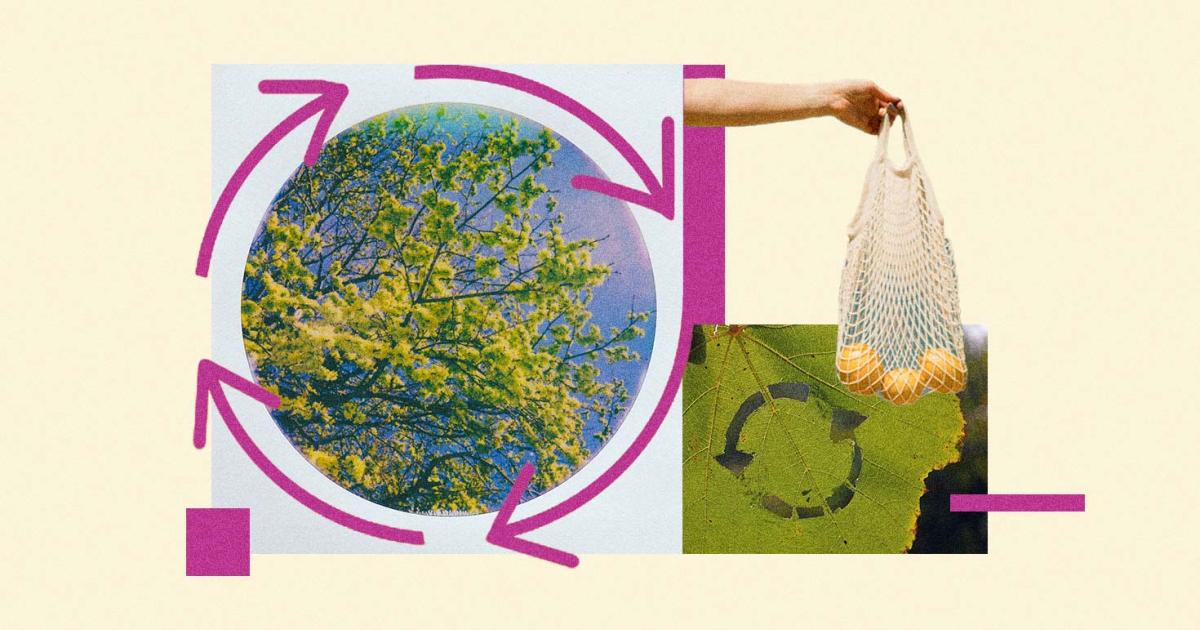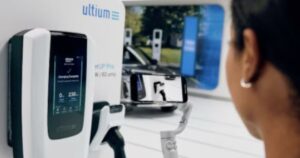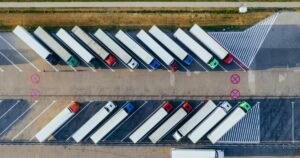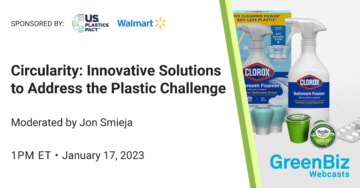
The following is a slightly modified version of the keynote address I delivered June 5 at Circularity 23 in Seattle. If you’d like to watch the full video of our keynote program from the event, check it out here.
If you’ll indulge me for a second, one of my favorite bands is Death Cab for Cutie. My love for the band and this one section of lyrics inspired me to write this piece. It is one of my favorite lines from their newest album, “Asphalt Meadows,” and it goes like this:
While the frontiers are ever-expanding
Our living rooms fall into disarray
And no one seems interested in fixing what they’ve broken
They just sweep the pieces into the bushes and slip away
I think these four lines do a pretty good job of summing up the economy we’ve collectively built over the past century or so.
Nearly all companies and organizations have contributed to the ever-expanding mess of extraction, waste, soil degradation, environmental racism and social injustice all in the name of growth at any cost.
All this happens as the places we hold most dear are struggling under the pressures of resource depletion, biodiversity loss and changing weather patterns. We only have one Earth, we share it with countless other species, and despite what some folks say, I’m not so sure we want to move to Mars. We have a responsibility to take care of this place for future generations and for the other inhabitants of it.
There’s a huge opportunity in avoiding waste in the first place, and in fixing what’s broken. We currently sweep the pieces away by continuing to pump more plastic into our waterways, more synthetic chemicals into our soil and more carbon into our atmosphere. All to serve our convenience-driven, throw-away economy.
In order to step past this broken system and into the future, we need a modern, post-industrial, circular revolution. One that is able to step in and clean up all the broken pieces from the bushes and find new, high-value uses for them. Better yet, let’s avoid the broken pieces and the waste in the first place through durability, repair, refurbishment and reuse.
Let me share what I think we need to accomplish together as soon as humanly possible. Those who are passionate about moving toward a circular economy need to unlearn our assumptions about extraction and growth, come to terms with the truth of this transition and the messiness it will create, wrap their heads around the level of creativity it will take to move toward circularity and accept the challenges that lie ahead.
The circularity gap
While none of us are comfortable with it, we are all quite familiar with the current linear economy. Frankly, it can be tough to imagine anything different.
A new Circularity Gap report by Circle Economy and Deloitte recently reported that global circularity rates decreased from 9.1 percent in 2018 to 8.6 percent in 2020 and to only 7.2 percent in 2023. The global circularity number is not abstract. It represents waste in our supply chains, waste at manufacturing facilities, products being disposed of too early, and the list goes on.
This steady decline — even as the concept of circularity is becoming better understood and gaining attention — is sobering to say the least. The community of circular economy professionals does many things, but one thing we don’t do is give up. The backslide in circularity is distressing, yes, but it’s also a reminder that without our efforts, we’d be headed even faster in the wrong direction.
The readers of this newsletter are current and future leaders who will do something different, who will help our whole society get unstuck from the status quo and build something better.
This readership is full of great intentions. Presumably, you all believe we need to make the transition to circularity. I understand, as you all do, that this work is not easy and can often be overlooked, under-resourced and underappreciated by leadership at our companies and within our organizations.
The audience of this newsletter is also full of action. You’ve collectively implemented pilot programs, designed more circular products and built new recycling and reuse streams. Because of the actions of the people at Circularity 23 and you, dear reader, we can see the makings of the future. It is taking shape in:
- New business models that support circularity
- Innovative product design that considers second and third uses, and maybe even uses beyond that
- Right to repair, extended producer responsibility and other regulation that can level the playing field for companies seeking to become more circular
- Tracking and traceability technologies
That said, we are not moving fast enough, and we are not going big enough. Let’s take all our great intentions, mix them with the intentions of our colleagues and peers, build partnerships for the future and take all that back to our day jobs with a new conviction to make measurable change. We must move from intention — to action. Now it’s time to get to work.
- SEO Powered Content & PR Distribution. Get Amplified Today.
- EVM Finance. Unified Interface for Decentralized Finance. Access Here.
- Quantum Media Group. IR/PR Amplified. Access Here.
- PlatoAiStream. Web3 Data Intelligence. Knowledge Amplified. Access Here.
- Source: https://www.greenbiz.com/article/circular-economy-about-avoiding-waste-and-fixing-broken-value-systems
- :is
- :not
- $UP
- 1
- 2018
- 2020
- 2023
- 23
- 7
- 8
- 9
- a
- Able
- About
- ABSTRACT
- Accept
- accomplish
- Action
- actions
- address
- ahead
- Album
- All
- also
- and
- any
- anything
- ARE
- around
- AS
- assumptions
- At
- Atmosphere
- attention
- audience
- avoid
- avoiding
- away
- back
- BAND
- BE
- because
- become
- becoming
- being
- believe
- Better
- Beyond
- Big
- Broken
- build
- built
- business
- but
- by
- CAN
- carbon
- care
- Century
- chains
- challenges
- change
- changing
- check
- chemicals
- Circle
- circular economy
- colleagues
- collectively
- come
- comfortable
- community
- Companies
- concept
- considers
- continuing
- contributed
- conviction
- Cost
- create
- creativity
- Current
- Currently
- day
- Death
- Decline
- delivered
- deloitte
- Design
- designed
- Despite
- different
- direction
- do
- does
- don
- durability
- Early
- earth
- easy
- economy
- efforts
- enough
- environmental
- Ether (ETH)
- Even
- Event
- extraction
- facilities
- Fall
- familiar
- FAST
- faster
- Favorite
- field
- Find
- First
- following
- For
- four
- from
- Frontiers
- full
- future
- future leaders
- gaining
- gap
- generations
- get
- Give
- Global
- Goes
- going
- good
- good job
- great
- Growth
- happens
- Have
- headed
- heads
- help
- hold
- HTTPS
- huge
- i
- if
- imagine
- implemented
- in
- inhabitants
- injustice
- inspired
- Intention
- intentions
- interested
- into
- IT
- Job
- Jobs
- jpg
- june
- just
- Keynote
- leaders
- Leadership
- least
- Level
- like
- lines
- List
- living
- loss
- love
- make
- manufacturing
- many
- mars
- models
- Modern
- modified
- more
- most
- move
- moving
- must
- my
- name
- Need
- New
- Newest
- Newsletter
- no
- now
- number
- of
- often
- on
- ONE
- only
- Opportunity
- or
- order
- organizations
- Other
- our
- out
- over
- partnerships
- passionate
- past
- patterns
- People
- percent
- piece
- pieces
- pilot
- Place
- Places
- plastic
- plato
- Plato Data Intelligence
- PlatoData
- playing
- possible
- pretty
- producer
- Product
- product design
- Products
- professionals
- Program
- Programs
- pump
- racism
- Rates
- Reader
- readers
- recently
- recycling
- Regulation
- repair
- Reported
- represents
- resource
- responsibility
- reuse
- Revolution
- Rooms
- s
- Said
- say
- Seattle
- Second
- Section
- see
- seeking
- seems
- serve
- Shape
- Share
- So
- sobering
- Social
- Society
- soil
- some
- something
- Soon
- Status
- steady
- Step
- streams
- Struggling
- supply
- Supply chains
- support
- Sweep
- synthetic
- system
- Systems
- Take
- taking
- terms
- that
- The
- The Future
- their
- Them
- These
- thing
- things
- think
- Third
- this
- those
- Through
- time
- to
- together
- too
- tough
- toward
- Traceability
- transition
- truth
- under
- understand
- understood
- us
- uses
- value
- version
- Video
- want
- Waste
- Watch
- we
- Weather
- weather patterns
- What
- WHO
- whole
- will
- with
- within
- without
- Work
- wrap
- write
- Wrong
- yes
- yet
- you
- zephyrnet










